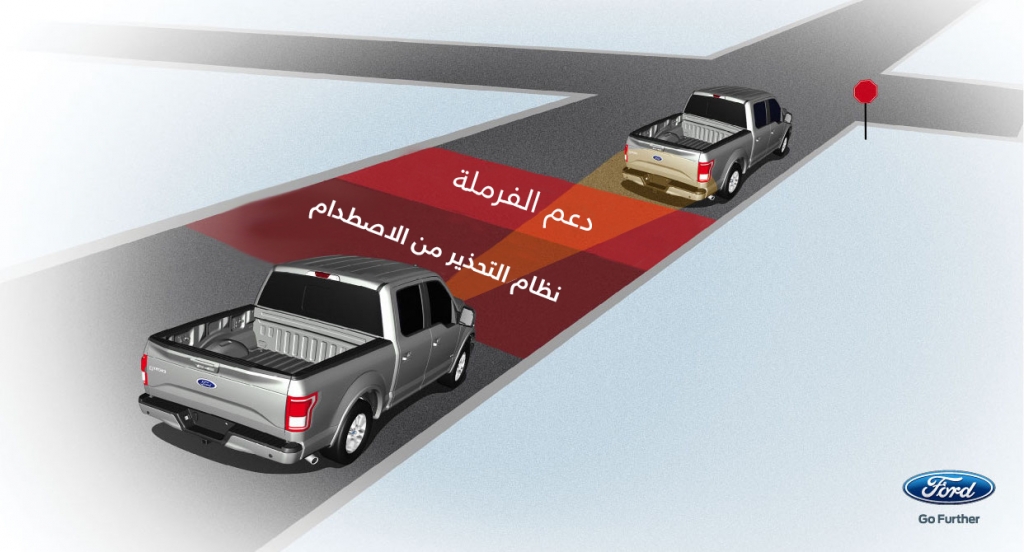
Is Your Car Judging You? If So, That Could Be a Good Thing
What’s the smartest piece of technology you own? It could be the car you drive, and it’s about to get even smarter, with Ford’s plan to begin production of self-driving vehicles in 2021.
While it’ll probably still be a few years until self-driving cars take to the streets around the world, the vehicles we drive today already have semi-autonomous and driver assistance features in place. These advanced technologies are designed to detect less-than-ideal driving conditions before you even realise you need a helping hand. So yes, even today they are smart enough to judge you, and your driving skills.
But unlike judgmental people, judgmental cars aren’t there to bring you down; they can actually help make you a better driver, or offer potentially life-saving warnings for unforeseen hazards. If you’re currently in the market for a new vehicle, here are five technologies – all available Ford technologies – to look for to help make your time on the road safer and less stressful.
Driver Alert System
The situation: Your car is veering between lane markings.
The judgment: This driver may be distracted or dozing off.
The action: Warns you of your faltering vigilance level.
How it works: Ford’s Driver Alert System judges your vigilance level by measuring your car’s position within the lane and the yaw (or rotation) rate of your car. Using data from the lane-keeping system, the Driver Alert System can detect signs of fatigued driving and provide a warning on the instrument cluster.
Collision Warning Technology
The situation: You’re in fast-moving traffic, there’s the potential for a collision with the vehicle in front, and you’re not acting to prevent it.
The judgment: This driver needs help to brake in time to prevent a potential collision.
The action: Warns you to enable faster braking, even pre-charges brakes to increase sensitivity.
How it works: This technology continuously monitors the traffic conditions ahead. When it senses a high risk of collision with the vehicle in front, and that you are not doing anything about it, the system will alert you with audio and visual warnings. Ford cars are equipped with Forward Collision Warning with Brake Support which provides faster braking performance when necessary. Adaptive Cruise Control sensors can also detect when the Ford is approaching a slow-moving vehicle ahead and adjust speed accordingly.
Active Braking Technology
The situation: You’re driving at slower speeds in traffic, and don’t step on the brakes quickly enough to deal with situations like a car in front suddenly changing into your lane, or stopping abruptly for a red light.
The judgment: This driver is approaching the vehicle ahead with the distance critically reducing and not enough force is being applied to brakes.
The action: Autonomously applies the brakes.
How it works: Active braking technologies are designed to trigger the brakes when they sense that the required braking force to avoid a collision is escalating, and you haven’t taken action yet. As an example, Ford’s Active City Stop technology does this by using a sophisticated light- and range-detecting sensor that scans the road ahead 50 times a second when you are driving up to 50 km/h.
Electronic Stability Programme
The situation: You swerve quickly, causing your car to lose traction.
The judgment: This driver needs help regaining control of their car.
The action: Automatically applies the brakes and adjusts engine torque to help you regain control.
How it works: Modern cars come with some version of an Electronic Stability Programme (ESP), which can help you maintain control in adverse driving situations or when you are making quick maneouvres. Ford vehicles also offer torque vectoring control, which continuously balances power between front wheels for exceptional control and handling when you’re accelerating through corners. When ESP senses that your car is losing traction, it automatically applies the brakes to individual wheels and adjusts engine torque to improve your vehicle’s stability and help avoid skidding. If the ESP light in your instrument cluster is flashing, it’s indicating that your ESP has activated. As skidding is one of the main causes of accidents, avoiding it is really important.
Lane Keeping System
The situation: You are drifting out of your lane and are not indicating.
The judgment: This driver, most likely distracted, is unintentionally veering into a neighbouring lanes.
The action: Warns you of the lane departure and steers you back to your current lane if you do not respond.
How it works: When you start to leave your lane without indicating, Ford’s Lane-Keeping System which includes lane-keeping alert, alerts drivers when they drift unintentionally from their lane, and lane-keeping aid, which provides steering assistance to guide an unintentionally drifting vehicle back into its lane.
New semi-autonomous and driver assistance technologies are arriving at a blistering pace, and offer early adopters a peek into what the future will look like. So, embrace them and learn what they’re all about: after all, they may be judgmental, but they have our best interests at their (technical equivalent of a) heart.




























